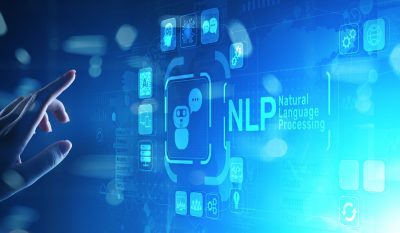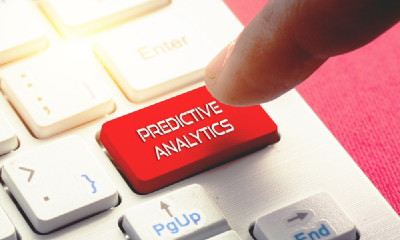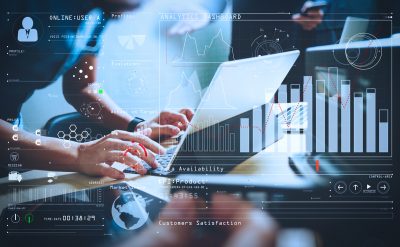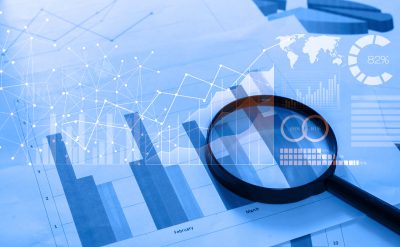Let’s explore!!!
When we talk about data analytics tools, we have so many questions regarding which tool will better suit the organization? What is the difference between a large number of data analytics tools? Is it a good idea for an organization to give a shot to data analytics tools?
Before answering all these questions, let’s take a small tour of the basics!
What is a data analytics tool?
Data analytics plays a vital role in enterprises, i.e., to sort the gathered data. These big data analytics tools not only help enterprises in evaluating vast data sets and identifying patterns but also assist in developing prescriptive and predictive models. Usage of these tools will help businesses to advance revenue opportunities, operational efficiency, and overall productivity.
In short, we can say that these tools play an essential role to sort raw data and transform it into easily understandable information.
Data analysis is a daily practice of modern businesses. Selecting the right data analytics tool is challenging, as no tool fits every need. Thus, it is necessary to understand the sole purpose of data analysis. Data analysis’ fundamental reason is associating, understanding, and assessing data, thus making the data satisfactory.
Important factors before selecting the tools:
- Study and understand the types of data your enterprise wants
- Data governance
- Pricing planning for data analytics tools
- Scalability and agility
- Account for experience and performance
- Evaluate the security of analytics vendors and providers
We need to understand our data now, and for that, we need tools. Then, there arises a question, how to choose the data analysis tools?
The answer is:
1. First, understand your organization’s needs and find out who will be handling these tools, whether sophisticated data scientists and data analysts or a non-technical user. The tool must aid with visualizations relevant to your organization.
2. Second, it is a must to consider a tool’s data modeling capabilities. Because few support a semantic layer or can perform data modeling themselves; or use SQL (Structured Query Language) or a tool such as dbt (data build tool) to model your data before analysis.
3. Thirdly, consider costs and licensing.
Let’s take a tour at the most popular choices available today for perfect data management:
1. Xplenty
It provides a cloud-based solution for data integration and ETL. It has powerful on-platform transformation tools that assist with transforming, cleaning, and normalizing data. Also, it helps to generate visualized and simple data pipelines for data lake or data warehouse.
This complete tool kit is exclusively used for building data pipelines and is used to run simple replication tasks and complex transformation.
Features: It offers no-code or low-code options, supports a REST API connector, and others.
2. Octoparse
Octoparse is a visual web data extraction programming tool with a simple point and click. No coding needed, thus making the procedure more straightforward for you to get information from the web.
Features:
- Ad blocking or ad filtering technique feature helps to extract data from ad-heavy pages
- Deals with both static and dynamic websites
- Point-and-click interface
3. Splunk
Splunk is a platform exclusively used to visualize, search, and analyze the machine-generated data collected from various websites and applications.
Splunk has introduced products in several fields such as analytics, information technology (IT), DevOps, and security. Thus, it was recognized as a “Visionary” in the 2020 Gartner Magic Quadrant for APM (Application Performance Management).
Products: Splunk Cloud, Splunk Free, and Splunk Enterprise
Companies utilizing Splunk: Lenovo, Domino’s, Intel, and the Otto Group use Splunk to enhance the data extraction process.
Enhanced features: It analyzes and detects problems with clear visibility, predicts and prevents issues by monitoring, visualizes business processes, and simplifies the complete security stack.
4. R-programming and Python
These are the top programming languages used in the data analytics field. Python is a high level, an interpreted language with dynamic semantics and easy syntax. At the same time, R-programming is an open-source tool used for analytics and statistics.
Companies utilizing R-programming and Python: Facebook, YouTube, and Netflix use Python and Firefox, and ANZ (Australia and New Zealand Banking Group) and Google use R-programming.
5. Talend
Talend is an advanced data integration modern ETL tool available in the industry and is created in the Eclipse GUI (graphical user interface) Development Environment.
Moreover, it allows enterprises to manage all the steps involved in the ETL process and deliver clean, compliant, and accessible data.
Products: Talend Data Fabric, Talend Open Source, Talend Cloud Data Integration, Stitch Data Loader, and Talend Pipeline Designer
Companies utilizing Talend: AstraZeneca, ALDO, Euronext, and AB InBev
6. Microsoft Excel
It is an enhanced platform that will help one to get better insights into your data. It is one of the most popular tools for data analytics and offers features such as directly adding data to Excel from a photo, sharing workbooks, and work on the latest version for real-time collaboration.
Companies utilizing Microsoft Excel: Almost all firms use Microsoft Excel daily to collect essential data insights.
7. Power BI
Power BI is a Microsoft product exclusively used for business analytics. In the 2020 Gartner Magic Quadrant, it is a leader for the past 13 years consecutively. Thus, it offers interactive visualizations with self-service business intelligence (BI) capabilities, where end users can create reports and dashboards on their own.
Products: Power BI Report Server, Power BI Desktop, Power BI Embedded, Power BI Pro, Power BI Mobile, and Power BI Premium
Companies utilizing Power BI: Multinational enterprises, such as GE Healthcare, Adobe, WorldSmart Group, and Heathrow, use this enhanced tool to get the best results from their data.
Recent enhanced features: Power BI developed enhanced solutions such as Office 365 Power BI and Azure Power BI to help users protect and analyze data across several Office platforms.
8. RapidMiner
It is an advanced platform for developing machine learning (ML) models, data processing, and deployments. Moreover, RapidMiner recognized as “Visionary” in the 2020 Gartner Magic Quadrant for Data Science and Machine Learning Platforms.
Products: Radoop, Studio, and Real-Time Scoring
Companies utilizing RapidMiner: Sanofi, BMW, ezCater, and Hewlett Packard Enterprise
Recent enhanced features: RapidMiner recently introduced RapidMiner 9.6 that extended the platform to full-time coders and BI users.
9. QlikView
It is a data analytics, self-service BI, and data visualization tool. It is a leader in Gartner Magic Quadrant 2020 for Analytics and BI platforms. Its primary aim is to boost business value via data by offering advanced features such as data literacy and data integration.
Organizations utilizing QlikView: Few top users are Samsung, CISCO, KitchenAid, and NHS (National Health Service)
Recent enhanced features: It introduced an intelligent alerting platform Qlik Alerting for Qlik Sense that helps organizations manage the exceptions and notifies users of potential issues.
10. OpenRefine (Google Refine)
OpenRefine is a free and open-source data analysis software. This advanced tool works with messy data, i.e., dataset linking, cleaning, and transforming.
Enhanced features: The tool works smoothly with large data sets, allows import and export of various file formats, and easily uploads data to a central database.
These 10 best data analytics tools will help to boost enterprise revenue.
Final words…
The rising importance and demand for data analytics in the industry have produced several openings across the globe. Thus, it is slightly tricky to shortlist the top data analytics tools. From the above tools, we can say that RapidMiner is an excellent data analysis software for ML and is easy to use. OpenRefine makes working with messy data easier and supports many file formats for export and import. R-programming is an exclusively preferred tool in data science, and Talend is a powerful and popular ETL integration tool.
Just remember, “Without data, you are just a person with an opinion.” – W. Edwards Deming
For more such content, download our latest whitepapers on data and analytics.














